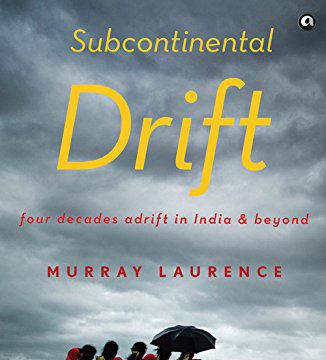Hang out with yak herders in a hamlet in north Sikkim, gape at the bizarre Toraja death ritual in south Sulawesi, look for brown marmots in Baltistan, watch a kolam come alive outside a hut in Mahabalipuram… impossible is nothing in travel these days. Surf the net, book on your smartphone, and you’ll be escorted through every kind of exotic experience.
Consider then a time when travelling from Chennai to Kathmandu was an adventure (no makemytrip), when a 7am rickety bus from Jodhpur to Udaipur left at noon (no Red Bus, no Volvo), when you could lose a GK quiz to a co-passenger (no Google). Australian teacher and traveller Murray Laurence was the original backpacker long before the word itself was coined, as he points out. His memories of making his way across India, the subcontinent, and Asia make for a hilarious and often unbelievable diary in today’s seamlessly connected world.
Laurence’s Asia of the early 1970s was yet to make its way into travel guidebooks. Those years, the intrepid Wheeler couple from Britain was still traversing Asia and putting together the survival tips that later metamorphosed into Lonely Planet.
“Once upon a time backpacking was an adventure… You took a chance with every meal, lodging, train and bus journey… and we didn’t care anyway because that was what travelling was all about… we were free to think, watch and wander,” he says, as in Chiang Mai he watches frantic tourists ziplining, rafting, biking and trekking.
Laurence tumbled into the sort of unexpected experiences that tour operators now routinely package for pre-lunch entertainment—making friends with Meo, Akha, Lisu and Karen tribal villages as he travelled between Thailand and Laos, sharing fried critters skewered on fire and watching women weave. Going unprepared for every ride he landed in the midst of an insurgency someplace in the innards of the Golden Triangle and made acquaintance of a small-time arms dealer at a place whose name he doesn’t know (no guidebook, map or signs). Imagine being asked today in a forested village whose name you can’t quite get in the Mekong delta a simple question: “Do you require an elephant?”
For totally screwball hilarity, there is little to beat Laurence’s early experiences with random Indian clerks, lawyers, priests, co-travellers on trains and buses and passers-by. Tricksters, the Rajasthan train that stopped all night for an oncoming train that didn’t exist, chaotic bus depots, smarmy guides, sadhus (the kind that seek alms for the privilege of being beaten with leather slippers)… the pages are packed with the kind of men—and women—who are so much a part of Indian life that we rarely stop to comment on them anymore.
As for the stilted Angrezi, it never ceases to innovate (“When the train which is not coming, doesn’t come, all matters will be clear.” “Your bread is not low and your tables are high. Higher still than ours. Our tables are short, as often we are sitting on the floor.”)
The last wonderful book that packed in Indian eccentricities like Laurence’s was Srinath Perur’s outstanding If It’s Monday, It Must Be Madurai on, among other things, sex starved tourists headed for Uzbekistan.
The subcontinent, for a curious traveller, is a riotous experience that gives and gives and for so little. Listen then to the spiel of an old man as he approaches Laurence: “Sir, I am an ancient, wise man. What do you want to know? Now is the monsoon season and wisdom service is very cheap.”




